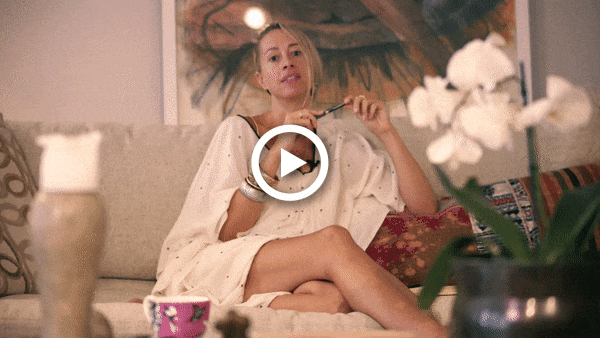
Whether you are single or in partnership, we're all in a constant state of relating to one another. Maybe it’s your lover, your husband, or your girlfriend, but it’s also your mother, your best friend, and your neighbor. The list goes on. Inevitably, as any relationship deepens, our emotions become more vulnerable, our fears and personal stories get in the way, and it can become increasingly difficult to approach conflict with love and clear communication, which is what we all ultimately desire.
If we could only take a moment to pause and step back it’s possible that we could have more success when it comes to resolving issues with the ones we love most.
One of the most typical causes of arguments comes from the patterned thought process of seeing the other person as the answer, or source, to your happiness. This is more common in romantic partnerships. In American society we have been taught through pop culture that our partner should be “our everything.” It’s quite a burden to place on one another when in fact our deepest sense of happiness should come from within our own independent well of joy. If we are unable to find our own inner peace and ease, every relationship we are in will suffer because of it.
Many relationships suffer due to our lack of understanding around our own pain and suffering. When we're hyperfocused on our own pain it puts us in a defensive position where from we feel attacked. This can be extremely harmful to the relationship and will be a major obstacle to overcoming the initial or root issue. When you find yourself in an uncomfortable conversation and you are in defense mode, either an argument with a family member or a fight with your husband, try asking the following questions:
What's the story I'm telling myself?
Who am I in this conflict?
What is this conflict truly stemming from?
Do I need to be more independent around this issue?
Only after taking a step back (maybe even taking several days) and answering these questions are you ready to enter back into the conversation with your loved one. At this point you will be far more equipped to clearly communicate what it is that you truly feel and in a way that will be expressed with love rather than coming from baggage, anger, fear, or any other negative emotion.
The issue may always be there, but as we evolve how we deal with the issue, it's possible that the relationship may evolve as well, and the issue may dissolve because of that. Try to see arguments as opportunities for growth for you and your loved one to strengthen your connection, and to align more fully on certain values. It's also an opportunity to examine and tell the truth. It’s always helpful to place yourself in the other’s shoes. Try to understand where your loved one is coming from and put their needs before your own. When we operate from a place of love and presence it makes space for deeper appreciation and understanding. And, could even lead us to embrace the differences that got us into the quarrel in the first place.
Key Take-Aways:
Take a step back
Ask yourself the above questions on how you play a role in the conflict
Communicate how you feel from a place of love
Think less about solving the conflict and more about evolving it
While researching this topic, multiple women came up with the same answer when asked what was the one thing they felt would create more ease in their relationships:
“communicating our needs regularly and finding the balance between getting our own needs met and helping the other person get theirs"
I have a class all about Polarity and Relationship Dynamics, including a powerful 20-minute Body Yantra meditation for igniting your animal magnetism in The Shakti School Subscription, February 2018 issue.

Login here to access the classes or sign up for one month free using the discount code FREETRIAL at checkout.
And, if you’re looking for ways to spice up your relationship in the bedroom or to give yourself some extra love, check out our favorite CBD intimacy fluid from FORIA wellness. Make sure to use the coupon code SHAKTILOVE at checkout 🙂



 )
) 


